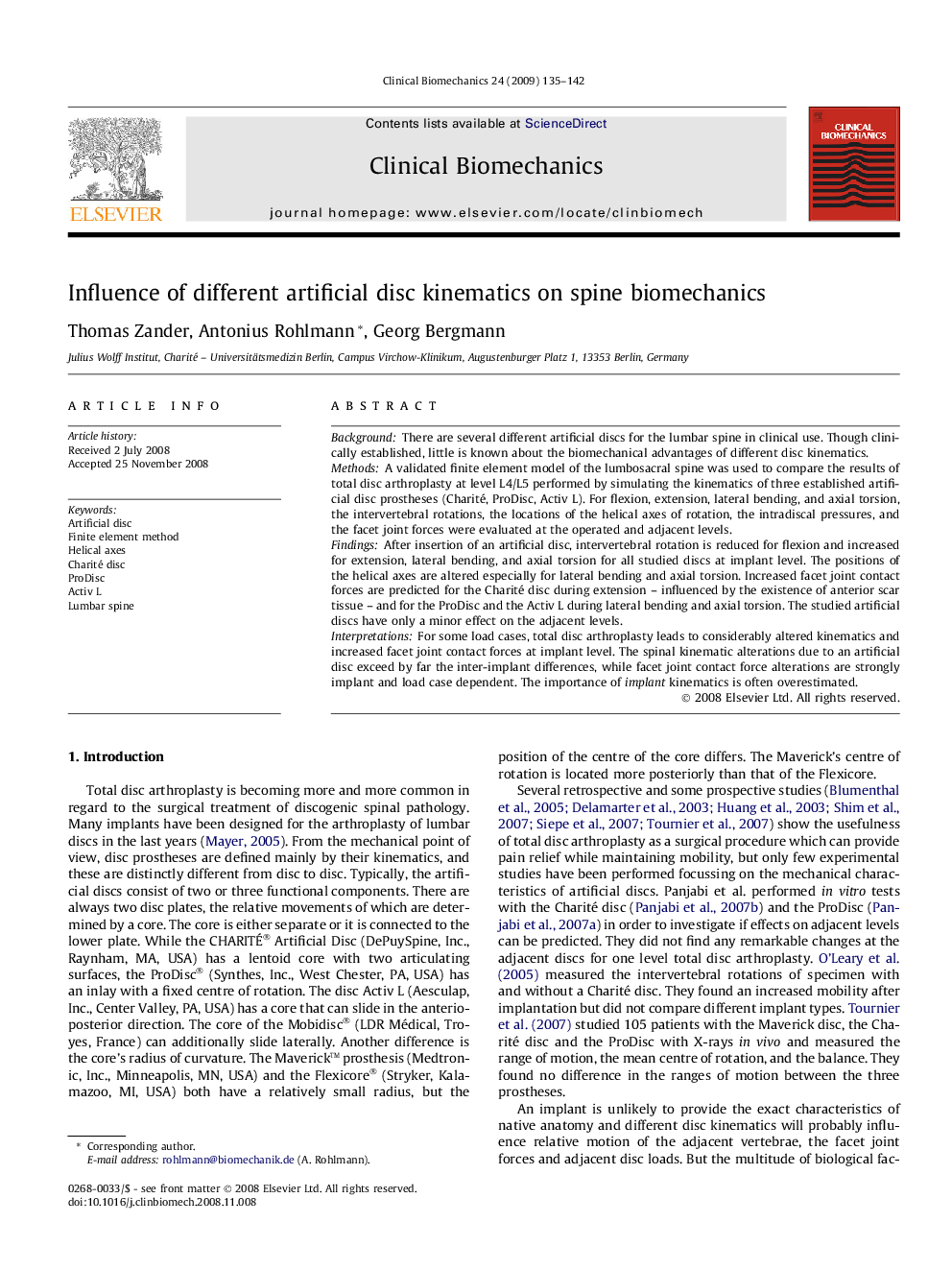| Article ID | Journal | Published Year | Pages | File Type |
|---|---|---|---|---|
| 4051019 | Clinical Biomechanics | 2009 | 8 Pages |
BackgroundThere are several different artificial discs for the lumbar spine in clinical use. Though clinically established, little is known about the biomechanical advantages of different disc kinematics.MethodsA validated finite element model of the lumbosacral spine was used to compare the results of total disc arthroplasty at level L4/L5 performed by simulating the kinematics of three established artificial disc prostheses (Charité, ProDisc, Activ L). For flexion, extension, lateral bending, and axial torsion, the intervertebral rotations, the locations of the helical axes of rotation, the intradiscal pressures, and the facet joint forces were evaluated at the operated and adjacent levels.FindingsAfter insertion of an artificial disc, intervertebral rotation is reduced for flexion and increased for extension, lateral bending, and axial torsion for all studied discs at implant level. The positions of the helical axes are altered especially for lateral bending and axial torsion. Increased facet joint contact forces are predicted for the Charité disc during extension – influenced by the existence of anterior scar tissue – and for the ProDisc and the Activ L during lateral bending and axial torsion. The studied artificial discs have only a minor effect on the adjacent levels.InterpretationsFor some load cases, total disc arthroplasty leads to considerably altered kinematics and increased facet joint contact forces at implant level. The spinal kinematic alterations due to an artificial disc exceed by far the inter-implant differences, while facet joint contact force alterations are strongly implant and load case dependent. The importance of implant kinematics is often overestimated.
